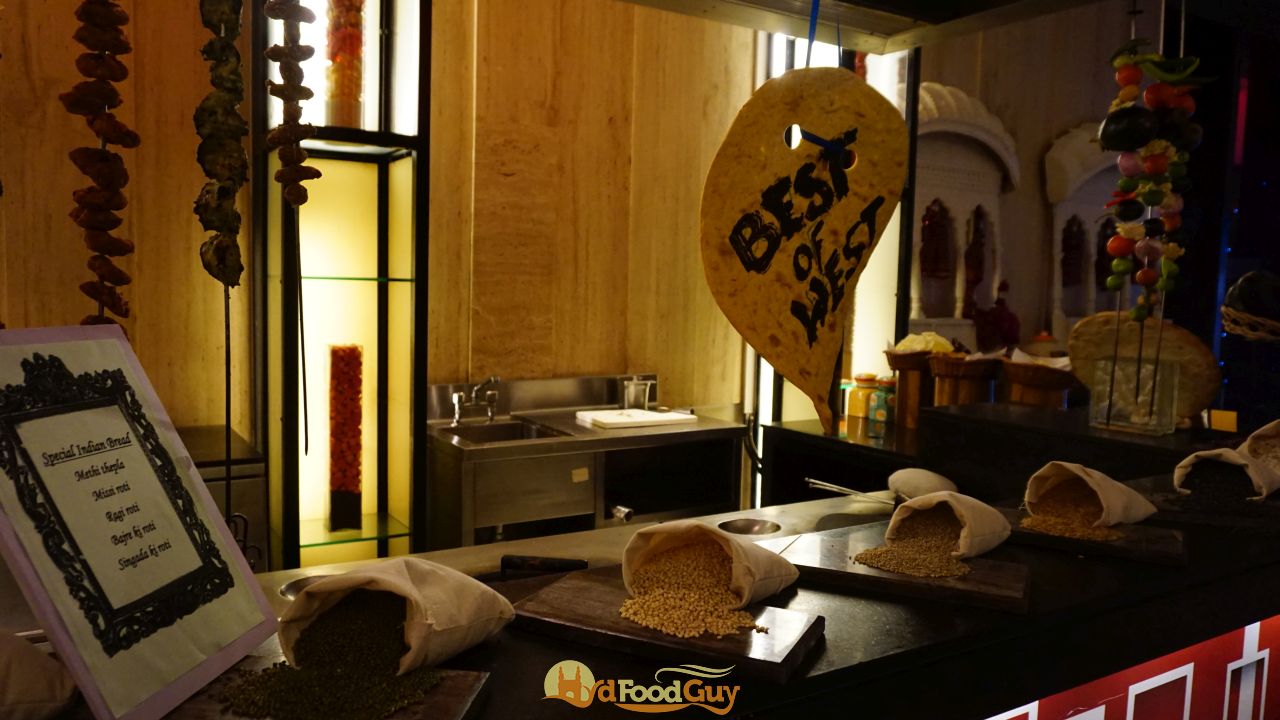I grew up in a small town near the Bengal-Bihar border where quintessential Bihari dishes like Sattu ki Sharbat, Litti, Thekua, and Gujiya were integral elements of the culinary landscape. Back in 2015, I wrote a short piece on Litti Chokha, which has emerged as a flag bearer of Bihari cuisine. Chokha was once Bihar’s secret, but it’s now increasingly available in different parts of India and is a common sight in metros like Delhi and Bengaluru. However, the other savoury and sweet dishes of this rustic cuisine have remained relatively little-known outside of the state. In spite of a sizeable migrant population from Bihar and Jharkhand, the city of Biryani doesn’t have any restaurant dedicated to this cuisine. The good news is that Ohri’s Tansen is hosting a limited-time food festival to offer the Hyderabad a taste of authentic Bihari food.
Ohri’s Corporate Chef Amey R Marathe spent over a decade and a half in Bihar and is intimately familiar with the food of the region. Tansen’s festival showcases thirteen dishes that encompass snacks and street food, meals, and desserts. I was invited to a blogger’s table where we had the opportunity to taste everything on the menu.
We began with a glass of Sattu ki Thandai. Sattu is a flour prepared from roasted bengal gram that’s popular in Bihar as well as in the adjoining regions of Bengal and Uttar Pradesh. Sattu ki Thandai is a savoury drink flavoured with chopped onions, salt, and spices. Sattu drinks are very much an acquired taste and the Thandai received mixed responses around the table. For me, though, it’s the perfect summer drink – a hearty, nutritious and delicious coolant. Ohri’s is offering unlimited servings of Sattu ki Thandai to patrons opting for the Bihari menu. However, be cautious while indulging, as Sattu can kill your appetite in a jiffy.
The first section of the menu features three popular evening snacks and street food. Nimki, a crispy savoury cracker prepared by deep frying spiced flour, is popular not only in Bihar but also in Bengal. It’s often consumed with Chai, but also works well with green chutney. The ribbon-like version known as Kucho Nimki in Bengal and Namak Pare elsewhere in the country is a more common sight in households. However, Ohri’s is serving the larger variant that offers a much more enjoyable textural variations. Dal Pitha, the second dish to arrive, raised a few eyebrows. The pastry of the Dal Pitha had been crafted just like a Momo (instead of the traditional half moon shape) and made us wonder if someone at the kitchen made a mistake. Our concerns were assuaged as soon as we bit into the Pitha. Pitha is a parlance shared in the culinary dictionary of Bengal, Odisha, and Bihar. However, while the Bengali Pithas are mostly sweet, the Dal Pitha is savoury with a spiced Bengal Gram stuffing. Another difference I observed was the use of wheat flour instead of rice flour.
A Bihari food festival can never be complete without Bihar’s most famous culinary export – the Litti Chokha. Littis are tough, dough balls stuffed with sattu and traditionally cooked over ovens fired by cow dung cakes, wood, or coal. Litti can be enjoyed with a variety of accompaniments but the most popular options are potato and brinjal mashes or chokhas. Tansen is offering two accompaniments – potato mash and tomato mash. The Litti itself was pretty good, however, the Chokhas were too dry for my liking. I missed the magical combination of Aaloo and Baingan coming together in a chokha. Dollops of ghee notwithstanding, Littis are inherently dry. The moisture of the Chokha is essential to balance the texture of the dish.
While the appetisers were all vegetarian, the mains featured a chicken and a mutton curry. Bhuna is a form of dry cooking prevalent in Bengal and Bihar that draws inspiration from Mughal techniques. The spices are initially dry roasted and then the meat is added and cooked in ghee or oil. The meat initially absorbs the oil, but once it’s properly cooked it releases the oil that has by now completely absorbed the flavour of the meat and the spices. It’s a laborious process, but the results can be spectacular. The dark, dry, and tender Bhuna Gosht at Tansen is quite easily the best dish of the festival. It’s the perfect dish to pair with the Dal Poori, which, once agiain, features a Channa Dal stuffing. For vegetarians, the recommended pairing for the Dal Poori is Bihari Aloo Dum. This cumin and ajwain dominated preparation is quite different from the North Indian variants of Aloo Dum that are better known across the country. Papda ki Sabji, which has nothing to do with a Papad or Papadum, is another distinctive speciality from the region. Layered besan (gram flour) pan cakes are cut into square pieces and doused in a gravy. The besan cakes reminded me of the the Bengali Dhoka, but Papda is a lot a more airy.
Bihari cuisine has dozens of desserts, many of which are dishes prepared in households to celebrate special occasions or festivals. Tansen has played it safe with the final course, and is showcasing two well-known dishes – Balusahi and Malpua with Rabri.
In the recent decades, Indian cuisine has travelled far and wide and has earned accolades for the fragrant, spicy kebabs and curries. However, the cuisine that has become globally known as Indian cuisine represents only a small subset of the food of the people of India. The sub-continent is home to an astonishing smattering of cultures. It’s a pity that even in a metropolitan city like Hyderabad, cuisines from regions like Assam, Bihar, or Madhya Pradesh have no representation in the culinary landscape. The good news is that the scenario is slowly changing. Over the past year, many fine dines attempted to step out of the comfort zone and experimented with food festivals on cuisines that aren’t yet mainstream.
Kudos to Chef Amey and Ohri’s for daring to move past the ever so frequent Punjabi and Bengali food festivals and work with an oft-ignored cuisine. It wasn’t perfect. I’d have loved to see the famed Bihari Kebab and Bihari Boti in the menu. The Chokha could have been better. The desserts could have been a bit more adventurous. But, it was still good enough to become one of my most memorable dining experiences this year. It’s encouraging to see an established brand like Ohri’s experimenting and taking risks. This augers well for the evolution of the Hyderabadi food scene. The festival is on until the end of May and a meal for two will cost around Rs. 1500.














Many foreign countries support street food to tap their tourism potential, but our country, which has maximum varieties, lacks this kind of support and promotion